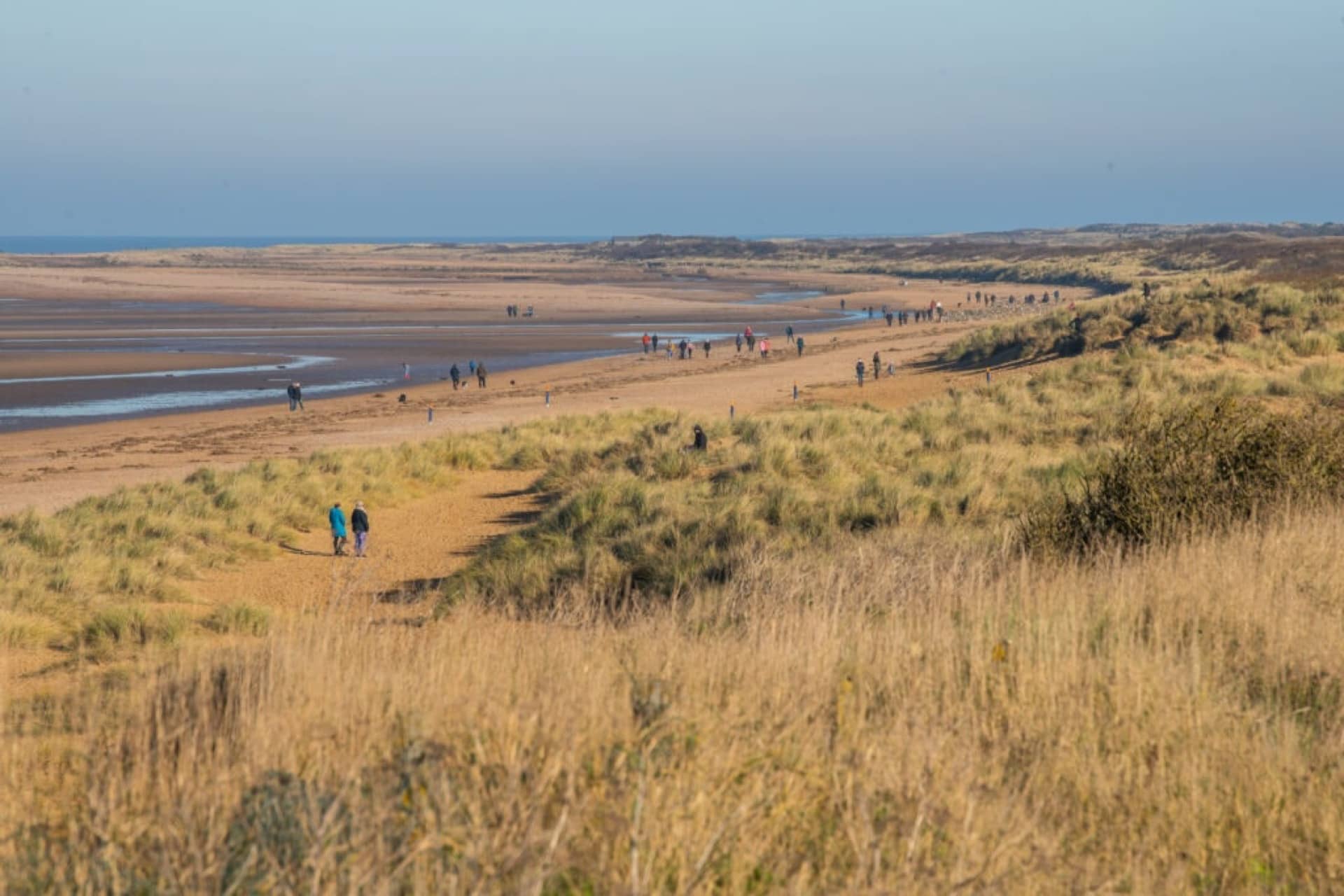
A Victorian Vision
Thousands of holidaymakers have memories of this handsome seaside resort, but not so long ago there was no town here at all.
Hunstanton was the vision of fabulously named Henry Styleman Le Strange, Victorian entrepreneur and landowner who developed part of his Norfolk estate as a coastal holiday village in the mid-19th century. You’ll see him on Upper Green at the start of your walk, an imposing bronze statue, proudly surveying the town he never saw in his lifetime.
His son, Hamon, took on the project after Henry’s death in 1862. Toast them both at the Golden Lion Hotel, Hunstanton’s first building, designed by Decimus Burton, renowned architect of Hyde Park, London Zoo and Kew Gardens.
It’s not signposted, but this circular walk is easy to follow with a map. Start at Le Strange’s statue. The train tracks round his feet to the success of ‘Sunny Hunny’. Head from Upper Green along North Promenade, up toward the distinctive striped cliffs, which featured in the 2021 film ‘Spencer’. Then onto the Norfolk Coast Path, past the ruin of St. Edmund’s Chapel and Hunstanton Lighthouse to Old Hunstanton and St. Mary’s Church, where Henry and Harmon lie buried. Finally, head back into town through the pretty picture postcard Esplanade Gardens.
Dodge the summer crowds and visit as a winter afternoon flares to dusk or on a morning in early spring to enjoy Hunstanton as Henry must have seen it, fresh and full of promise.
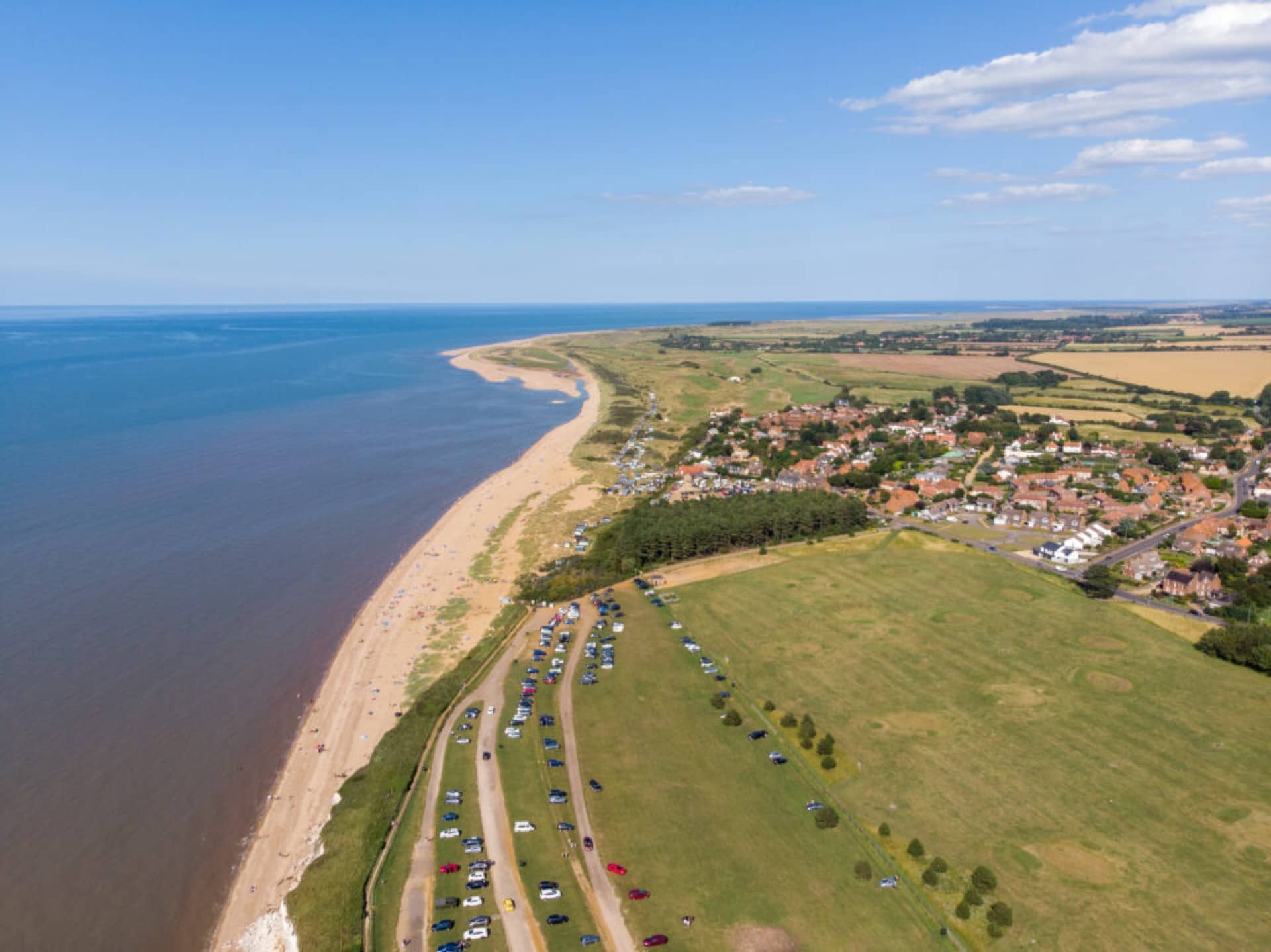
Dynasty of the Holy Wolf
It is 855 AD. A small wooden ship cuts through choppy waves, heading for the crew’s ancestral home. At the helm is Edmund Wuffing, last of the heroic Wuffing dynasty, guiding his vessel toward the striped cliffs of what is now Hunstanton. He is the ruler of these lands, back from far flung adventures to claim his royal kingdom.
‘Wuffing’ is the Old English word for wolf, and Edmund was last of a line that had ruled East Anglia for 200 years. Born on Christmas Day 841 AD he was just 15 when came to the throne. Alongside King Alfred of Wessex, Edmund battled the Great Heathen Army, a coalition of Scandinavian ‘Viking’ warriors who invaded England in 865 AD. In 869 AD Edmund was captured by Ivor the Boneless and his brother Ubba. Refusing to renounce Christ, Edmund was beheaded.
Desperately seeking their fallen king, Edmund’s grieving warriors followed the howls of an ethereal wolf who cried ‘Hic! Hic! Hic!’ (unless the wolf had been swigging ale, this is Latin for ‘Here! Here! Here!’) They found the spectral beast standing guard over their lord’s severed head. Later, Edmund received martyrdom, becoming the first patron saint of England – until St George took over. Goes to show, never work with wolves or dragons.
Discover more about Edmund by following the Wolf Trail at the entrance to the to the Esplanade Gardens. Six ‘Wolf Trail’ markers lead to St Edmund’s Chapel and the handsome oaken statue of a howling wolf.
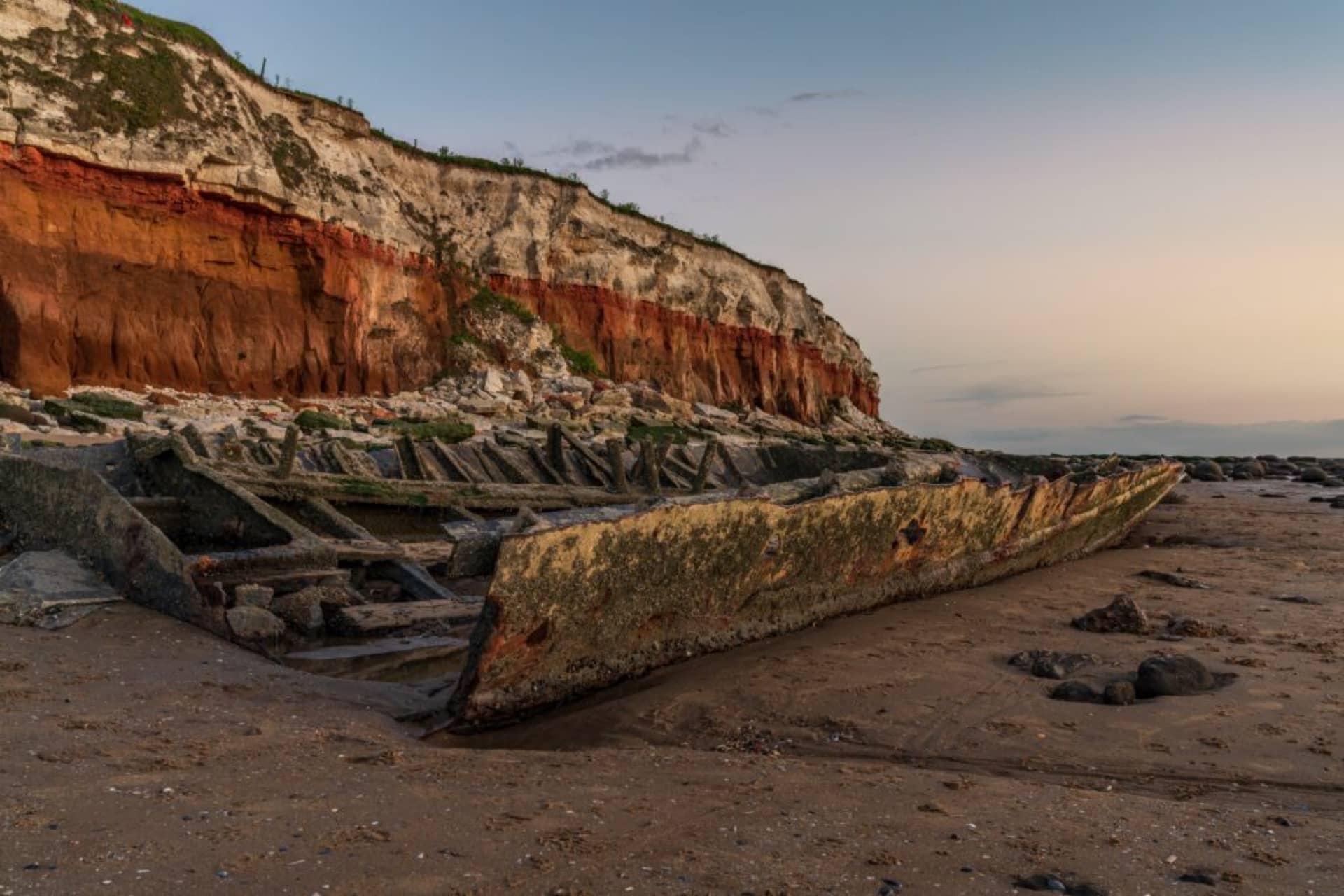
Rock & Roll
When the tide retreats, the sea reveals its secrets. At St Edmund’s Point near Old Hunstanton, the skeleton of the Sheraton lies in its last resting place on a bed of sand and rock, worn to the bone by waves and weather. Like all ships wrecked on the Norfolk coast, this once sturdy old steam trawler has its own story.
The Sheraton was built as a fishing vessel in Beverley, Yorkshire in 1907, designed to withstand the ruthless power of the North Sea when her crew set their nets off Grimsby. When the First World War broke out she was requisitioned by the Royal Navy and used for anti-submarine defences. And in the Second World War the Sheraton was busy serving her country again, now fitted with a six-pounder gun to patrol the waters of the North Sea coast. After the war she was painted daffodil yellow and used as an RAF target ship.
The Sheraton made her final voyage on the night of 23rd April 1947 when a wild gale howled in. Caught in the storm, the Sheraton broke her moorings off Lincolnshire, blew across the Wash and smashed into rocks in the shadow of Hunstanton’s striped cliffs.
Many years later, punk band The Stranglers rolled into town to pose on the beach near the remains of the Sheraton’s rusty rib cage, using Norfolk’s only rocky cliff as a backdrop for the cover of their aptly named album ‘Norfolk Coast’.
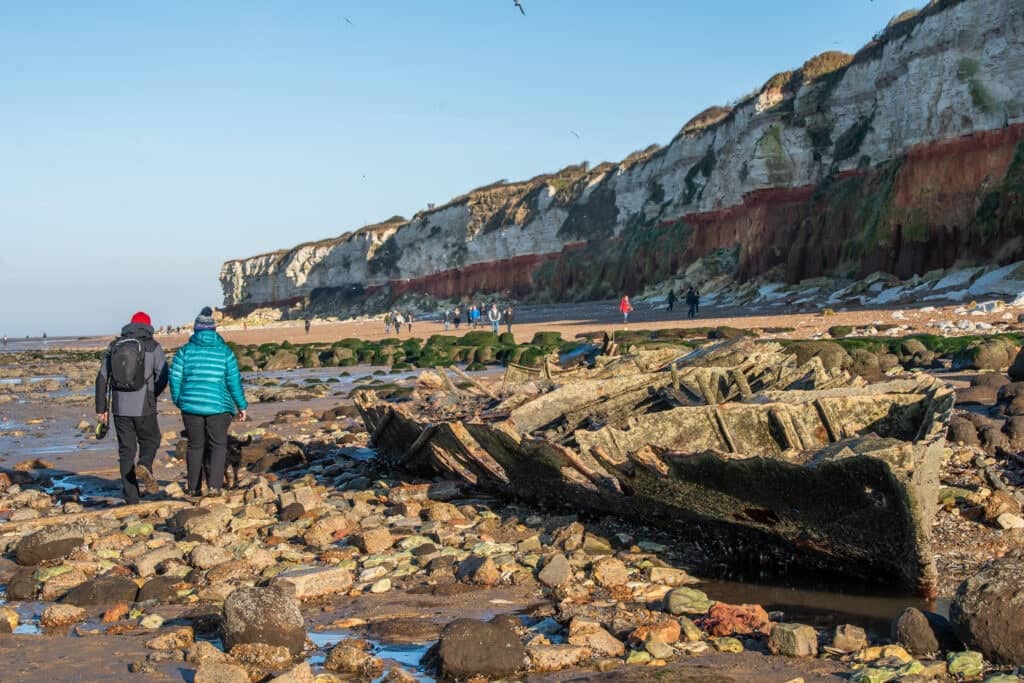
Chalk and Fossils
Famed for vast beaches and wild saltmarsh, Norfolk has an amazing coastline including a rocky cragwhich is striped like a circus tent.
Hunstanton cliff’s eye-catching bands of red, white and burnt orange sedimentary rock featured in the film ‘Spencer’ (2021). The colours are a joy for photographers, capturing their glowing beauty from this west-facing shore, especially dramatic during stormy sunsets.
A Site of Special Scientific Interest, the stunning stripy cliffs are part of a sweeping chalk ridge that once extended from the Chilterns to Yorkshire. In a fast-paced world, it’s calming to experience their slow majesty, knowing those ancient chalk layers accumulated at the steady rate of one foot every 30,000 years.
Chalk is the remains of organisms which once swam in the warm, tropical Cretaceous sea that covered Norfolk between 135 and 70 million years ago. The bottom layer of red brown carrstone is considered to be c.108 million years old and above it is a broad stratum of red chalk coloured by iron pigments and rich in fossils. Fossil hunters may find coccoliths, bivalves, belemnites and even shark’s teeth. But be careful! The cliffs are fragile and coastal erosion causes large chunks to fall quickly, so walk well clear of their shadow and stay safe.
And if rock fans think these cliffs look familiar, check your Stranglers albums. The punk band used Hunstanton cliffs as the location for the cover shoot of their aptly named ‘Norfolk Coast’ album. It’s official. Hunstanton rocks.
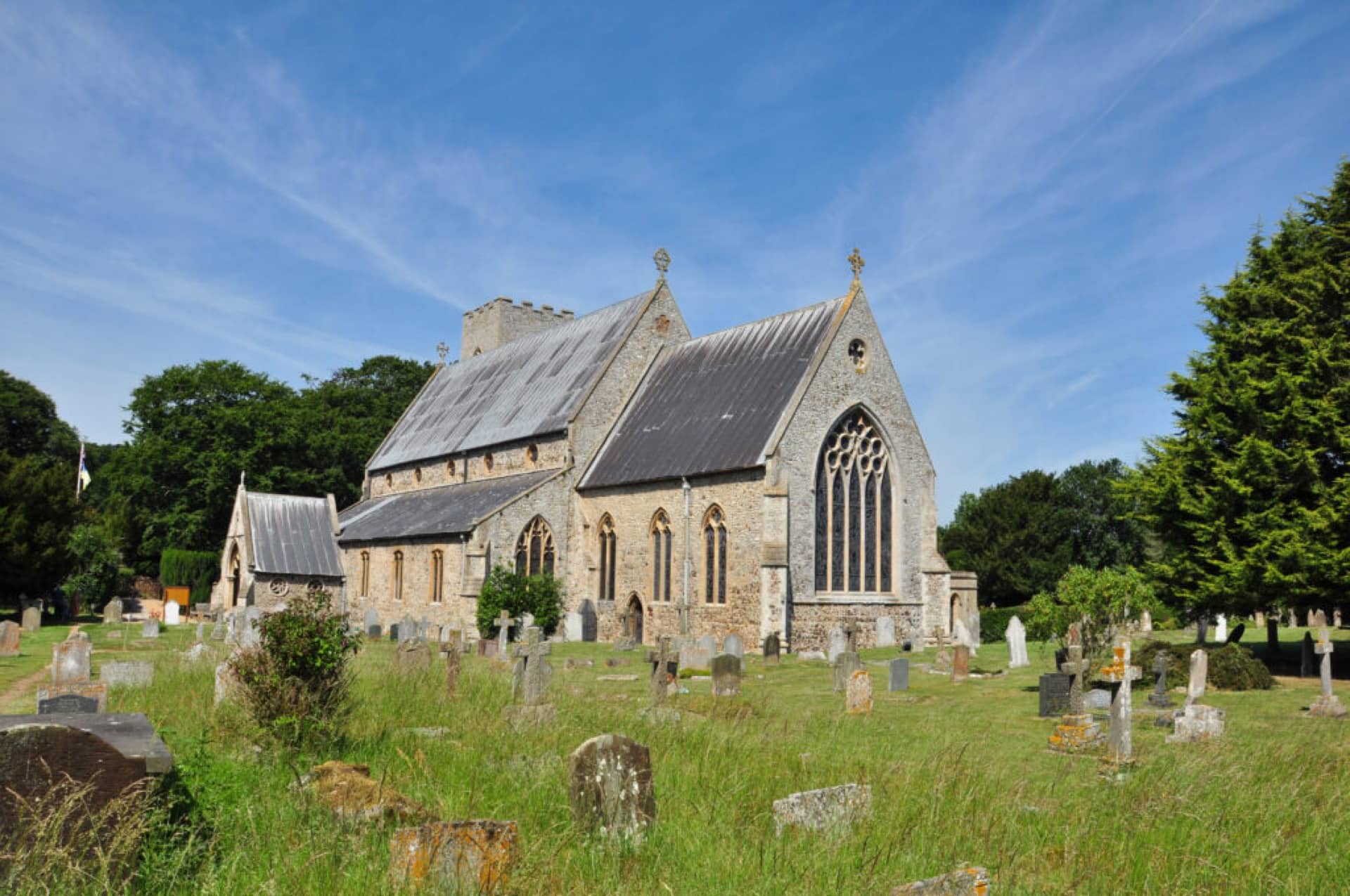
The Revenue Mans Lament
In the quiet churchyard of St Mary in Old Hunstanton, seek out the graves of two ‘honest officers’ of the government. William Webb was ‘shot from his horse’ and ‘poor’ William Green ‘inhumanely murdered by a gang of Smugglers’ in 1748. Allegedly, the gang’s guilt was beyond question, yet a local jury found them innocent. Furious, the thwarted prosecuting counsel tried the smugglers a second time. And again the jury cried ‘innocent’. So…was this coastal community intimidated into silence or were they (whisper it) complicit?
After all, who was most familiar with the inlets of Norfolk’s tidal creeks or knew secret paths on moonless nights? Which farmer might have lent a horse, provided a storeroom, hidden a key? Who were the ‘tubmen’, hauling contraband miles inland? And whose wealth provided the capital for these illicit ventures? How did the draper afford that fine silk or the parson get such cheap tea? Is it surprising the squire preferred his wine duty free? In a tight-knit, and even tighter-lipped community, it seems no-one was telling.
Here’s a clue to local loyalties; in 1822, revenue officers impounded 80 tubs of contraband at nearby Snettisham. Over 100 people armed with bludgeons and rifles rocked up to seize it back. Clearly Norfolk’s smugglers had determined support.
The idea of buccaneering free traders is certainly romantic, but also deadly. In an age when punishing taxes often left rural populations on the edge of starvation, which side would you have been on?
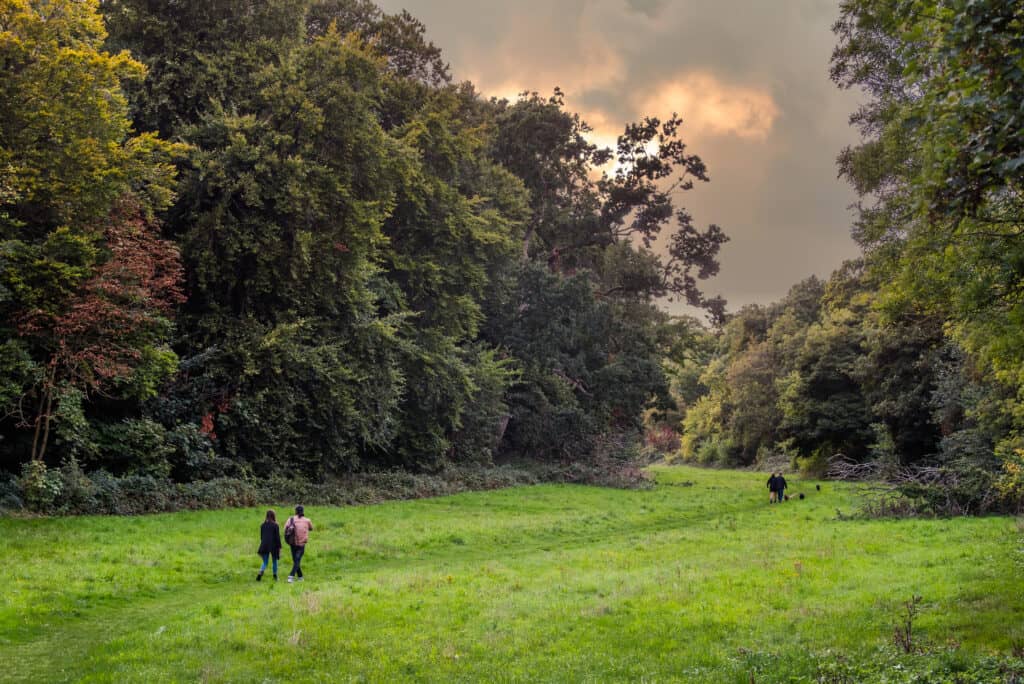
Ringstead Downs
Ringstead is easy to miss. And that would be a great shame, for this little village is full of character, tucked away from the busy Norfolk coast near the seaside town of Hunstanton.
Its pretty white-washed 17th century coaching inn, The Gin Trap, is an award-winning, dog-friendly pub with immaculate cosy rooms. Famed for fantastic local produce washed down by hearty local ales and gins, the pub’s name doesn’t actually come from a delectable G&T. It’s refers to the fearsome metal jawed trap once used to snare animals. Thankfully these brutal traps have long since been banned. Phew!
The Gin Trap is very close to Ringstead Downs, a Norfolk Wildlife Trust Reserve.
This 6.9-hectare (17 acre) wooded valley is a Site of Special Scientific Interest, where chalk stone was carved out by glacial meltwaters when the last Ice Age receded. The valley has never been ploughed, so it’s incredibly rich in biological diversity and is now the largest surviving area of chalk downland in the county. Signs guide you to a secret chalk pit conservation area. Many local roads are named Chalk Pit Lane, testament to the former local industry.
In autumn Ringstead Downs are sprinkled with starry purple gentians and bush crickets sing to the year’s last warmth before winter reveals the valley’s unique architecture. Skeletal trees cling to the steep sides and high in the clear air, red kites wheel and the buzzard’s plaintive cry evokes Norfolk’s ancient wild spirit.
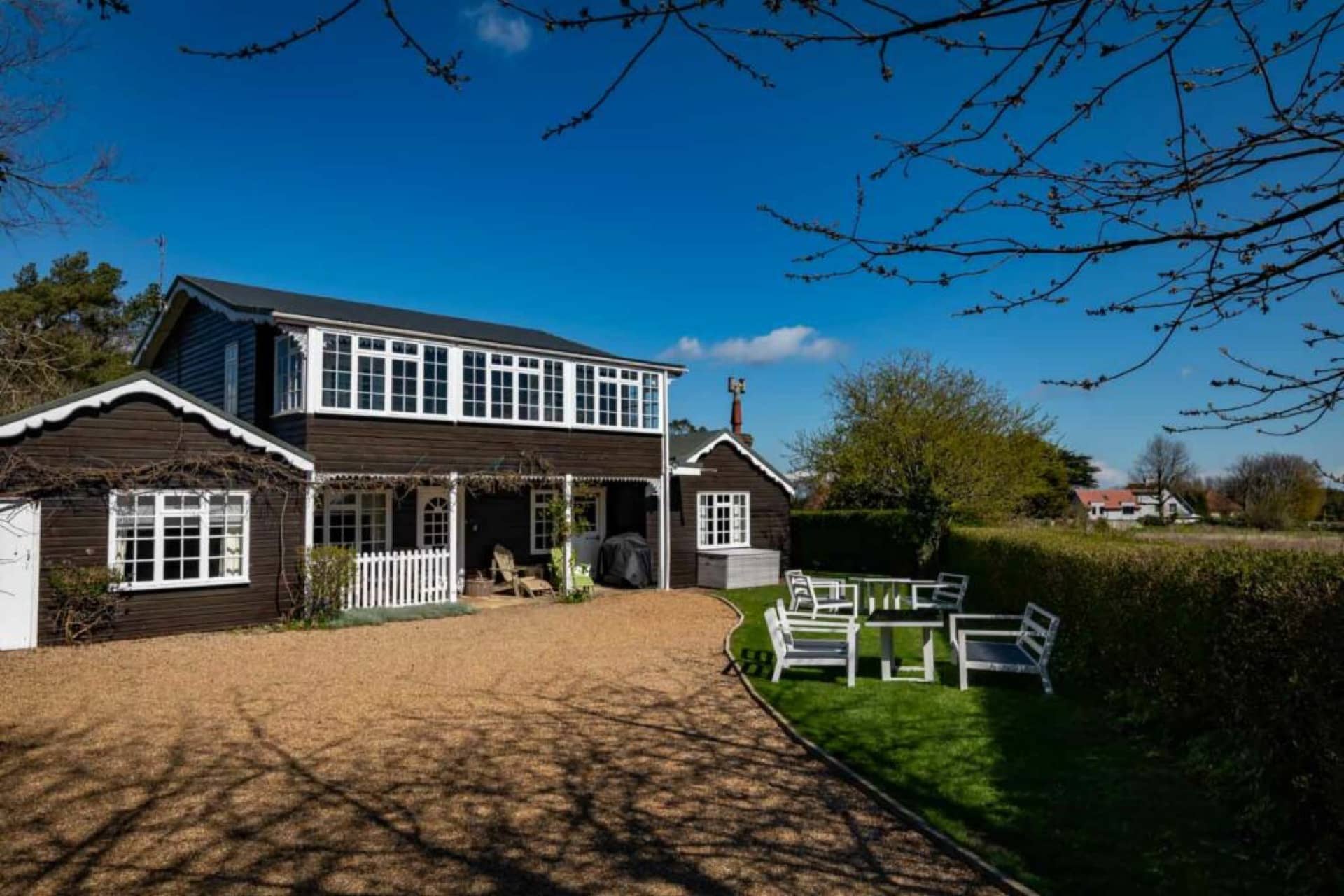
Hippisley Hut: Birthplace of Wireless Interception
How did a little wooden hut in Old Hunstanton play a crucial role in the outcome of the First World War?
The hut was named after Richard John Bayntun Hippisley, a keen amateur radio enthusiast (callsign HLX). At the outbreak of war, many wireless amateurs, including Bayntun and his friend Edward Russell Clarke (callsign THX), were assigned to the Admiralty’s Navel Intelligence Division Room 40 as ‘voluntary interceptors’, establishing a network of wireless stations. Bayntun and Russell Clarke had reported signals from the German Navy received on a lower wavelength than those detected by the higher frequency Marconi stations. In late 1914, Bayntun and Russell Clarke were sent to set up a listening post in a a former coastguard station in Hunstanton, West Norfolk, the highest point nearest the German coast, and home to an existing Marconi wireless station. The top secret work at Hippisley’s Hut played a critical role in the Battle of Jutland when an unusual level of German warship communication was detected in Wilhelmshaven in May 1916. The German fleet was stirring in the North Sea and thanks to wireless interception, the British fleet had warning. There was terrible loss of life, but the German navy was contained.
Today you can stay at what was known as Hippisley’s Hut. The original timber construction is now part of an elegant West Norfolk self-catering holiday home in the heart of the village, available with Norfolk Coast Cottages. Sleeping 10, it’s perfect for holidays with a sense of history.
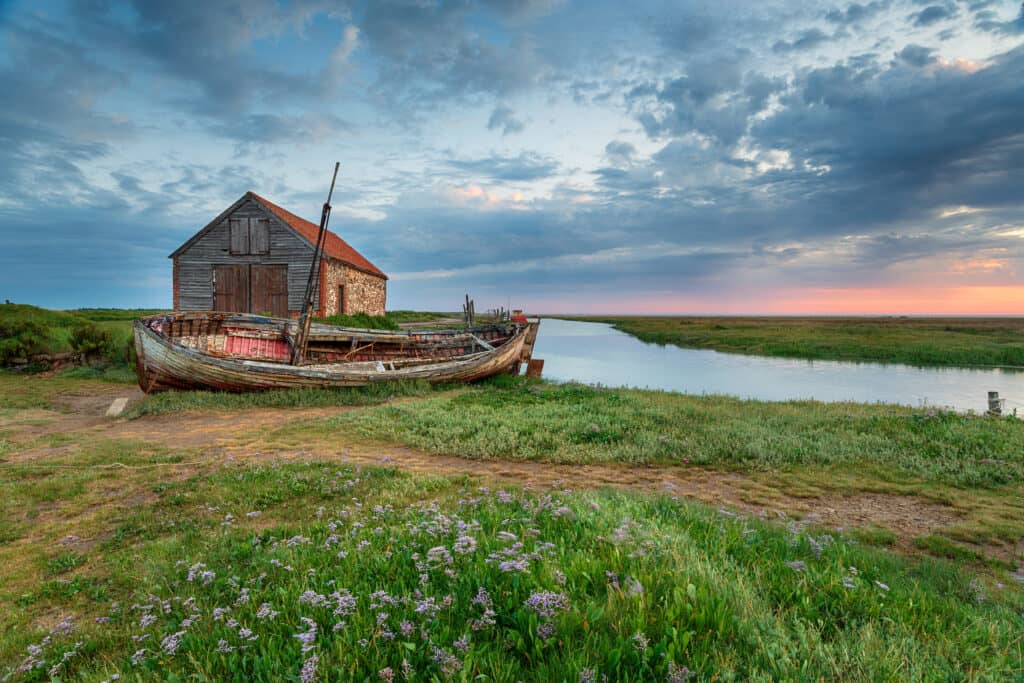
A Village of Timber, Iron and Coal
Picture the Industrial Revolution. Does Norfolk spring to mind? Many think industrial history bypassed this rural region but Norfolk’s industrial heritage is dotted all across the landscape, from water and windmills to railways, canals, timber plantations, chalk works, sand quarries and factories for making fertiliser, brushes or canning fish.
True, no coal mines opened in Norfolk, but there were coal merchants. Nathaniel Woods was last to use the port at Thornham. His ship, the Jessie Mary, left packed with grain and returned with coal. Her last voyage was in 1914, but Nathaniel’s coal barn still stands on Thornham harbour, although the granary was demolished after the great flood of 1953. There’s a dedication to Nathaniel on the lych-gate at All Saints’ Church.
The church was renovated in part thanks to donations from another enterprising and socially progressive local. Edith Ames Lyde founded the Thornham Art Ironworks in 1887 to provide entertainment, employment and training for villagers. Renowned for highly decorative pieces such as signs, railings, balconies, fire screens and weathervanes, the works made gates and lamps for Sandringham and other great estates including Balmoral Castle, plus royal commission for exhibitions across Europe.
Edith died on a design research trip in Shanghai in 1914 and that fateful year led to most employees becoming casualties of the First World War. In 1920 the Ironworks closed. You can see a sign produced at Thornham Ironworks hanging outside The Orange Tree, still advertising the pub’s original name, The Kings Head.
Build your own itinerary
If you fancy creating your own itinerary for a day trip to Norfolk or a longer visit, it couldn’t be simpler. Just go to Search Activities and select from our wide range of free and paid-for experiences, saving any that capture your imagination with the click of a button.
Once you’ve finished, you’ll find all the information stored in My Favourite, where you can drag and drop activities to create your own day-by-day itinerary! You can download this to a calendar and even share it with friends.